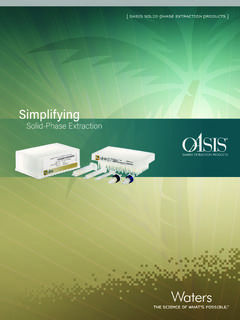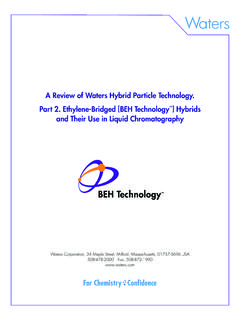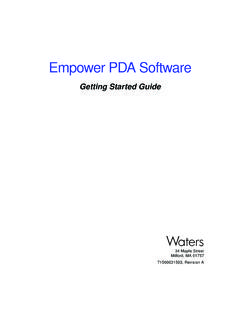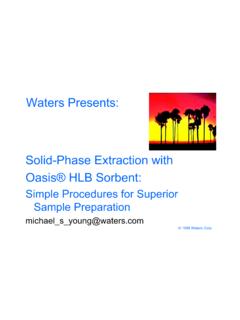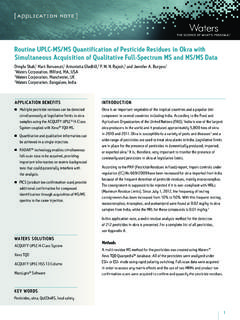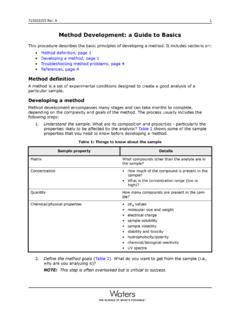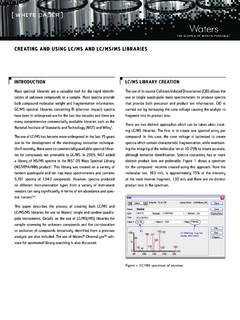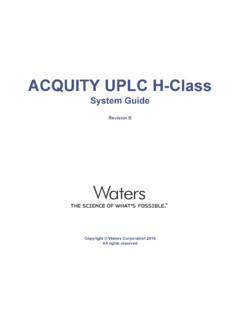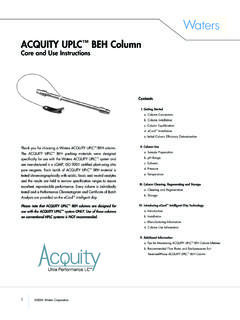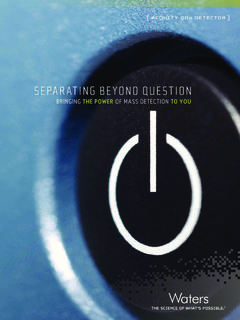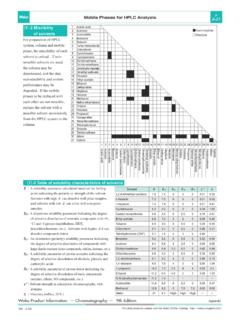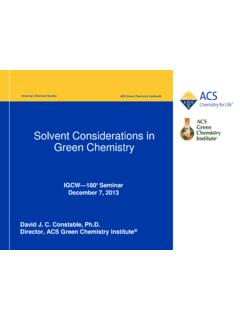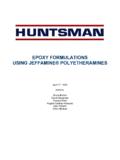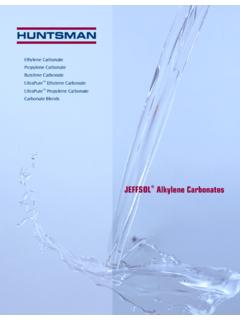Transcription of 2998 Photodiode Array Detector - Waters
1 2998 Photodiode Array DetectorOperator s Guide71500121902/Revision CCopyright Waters Corporation 2010 All rights reservediiCopyright notice 2010 Waters CORPORATION. PRINTED IN THE UNITED STATES OF AMERICA AND IN IRELAND. ALL RIGHTS RESERVED. THIS DOCUMENT OR PARTS THEREOF MAY NOT BE REPRODUCED IN ANY FORM WITHOUT THE WRITTEN PERMISSION OF THE information in this document is subject to change without notice and should not be construed as a commitment by Waters Corporation. Waters Corporation assumes no responsibility for any errors that may appear in this document. This document is believed to be complete and accurate at the time of publication. In no event shall Waters Corporation be liable for incidental or consequential damages in connection with, or arising from, its and Alliance are registered trademarks of Waters Corporation, and Empower, MassLynx, SAT/IN, TaperSlit, and THE SCIENCE OF WHAT S POSSIBLE.
2 Are trademarks of Waters is a registered trademark of Saint-Gobain Ceramics & Plastics, registered trademarks or trademarks are the sole property of their commentsWaters Technical Communications department invites you to tell us of any errors you encounter in this document or to suggest ideas for otherwise improving it. Please help us better understand what you expect from our documentation so that we can continuously improve its accuracy and seriously consider every customer comment we receive. You can reach us at WatersContact Waters with enhancement requests or technical questions regarding the use, transportation, removal, or disposal of any Waters product. You can reach us via the Internet, telephone, or conventional considerationsSome reagents and samples used with Waters instruments and devices can pose chemical, biological, and radiological hazards.
3 You must know the potentially hazardous effects of all substances you work with. Always follow Waters contact informationContacting mediumInformationInternetThe Waters Web site includes contact information for Waters locations worldwide. Visit and faxFrom the USA or Canada, phone 800 252-HPLC, or fax 508 872 other locations worldwide, phone and fax numbers appear in the Waters Web mailWaters Corporation34 Maple StreetMilford, MA 01757 USAivGood Laboratory Practice, and consult your organization s safety representative for advisoriesConsult Appendix A for a comprehensive list of warning and caution this instrumentWhen operating this instrument, follow standard quality-control (QC) procedures and the guidelines presented in this symbolsAudience and purposeThis guide is intended for personnel who install, operate, and maintain the Waters 2998 Photodiode Array (PDA)
4 Representative of the European CommunityConfirms that a manufactured product complies with all applicable European Community directivesAustralia C-Tick EMC CompliantConfirms that a manufactured product complies with all applicable United States and Canadian safety requirementsConsult instructions for usevIntended use of the 2998 Photodiode Array detectorWaters designed the 2998 Photodiode Array Detector to analyze and monitor various types of compounds. The 2998 PDA Detector is for research use calibrate LC systems, follow acceptable calibration methods using at least five standards to generate a standard curve. The concentration range for standards should include the entire range of QC samples, typical specimens, and atypical calibrating mass spectrometers, consult the calibration section of the operator s guide for the instrument you are calibrating.
5 In cases where an overview and maintenance guide, not operator s guide, accompanies the instrument, consult the instrument s online Help system for calibration run three QC samples that represent subnormal, normal, and above-normal levels of a compound. Ensure that QC sample results fall within an acceptable range, and evaluate precision from day to day and run to run. Data collected when QC samples are out of range might not be valid. Do not report these data until you are certain that the instrument performs classificationISM Classification: ISM Group 1 Class BThis classification has been assigned in accordance with CISPR 11 Industrial Scientific and Medical (ISM) instruments requirements. Group 1 products apply to intentionally generated and/or used conductively coupled radio-frequency energy that is necessary for the internal functioning of the equipment.
6 Class B products are suitable for use in both commercial and residential locations and can be directly connected to a low voltage, power-supply authorized representativeWaters Corporation (Micromass UK Ltd.)Floats RoadWythenshaweManchester M23 9 LZUnited KingdomTelephone:+44-161-946-2400 Fax:+44-161-946-2480 Contact:Quality managerTable of ContentsviiCopyright notice .. iiTrademarks .. iiCustomer comments .. iiiContacting Waters .. iiiSafety considerations .. iii Safety advisories .. ivOperating this instrument .. iv Applicable symbols .. iv Audience and iv Intended use of the 2998 Photodiode Array v Calibrating .. v Quality-control .. vISM classification .. v ISM Classification: ISM Group 1 Class B .. vEC authorized representative .. vi1 2998 PDA Detector Optics Principles .. 1-1 Detector optics .. 1-2 Calculating absorbance.
7 1-3 Flow cell operating principles .. 1-4 Resolving spectral data .. 1-5 Measuring light at the Photodiode Array .. 1-6 Optimizing the signal-to-noise ratio .. 1-7 Optimizing filter constants .. 1-7 Selecting the appropriate sampling rate .. 1-7 Computing absorbance data points .. 1-9 Dark current .. 1-9 Table of ContentsviiiTable of Contents Reference spectrum .. 1-9 Data 1-9 Filtering data .. 1-12 Reference wavelength compensation .. 1-132 Setting Up the Detector .. 2-1 Before you begin .. 2-2 Unpacking and inspecting .. 2-2 Laboratory site selection .. 2-3 Detector dimensions .. 2-4 Connecting to the electricity source .. 2-4 Making signal connections .. 2-5 Connecting the Ethernet 2-6 Network installation 2-7 Connecting to other instruments .. 2-8 Plumbing the Detector .. 2-16 Making the gas supply connection.
8 2-18 Starting up and shutting down the Detector .. 2-18 Starting up the Detector .. 2-19 Monitoring Detector LEDs .. 2-20 Shutting down the Detector .. 2-21 Using a cuvette .. 2-213 Maintaining the Detector .. 3-1 Contacting Waters technical service .. 3-2 Maintenance considerations .. 3-2 Safety and 3-2 Spare parts .. 3-3 Routine Maintenance .. 3-3 Maintaining the flow cell .. 3-4 Flushing the flow 3-4 Table of Contentsix Replacing the flow 3-5 Replacing the lamp .. 3-7 Replacing the fuses .. 3-104 Diagnostic Tests and Troubleshooting .. 4-1 Diagnostic tests .. 4-2 Verifying Detector calibration .. 4-2 Reading lamp energy .. 4-3 Performing the erbium calibration .. 4-3 Reading the calibration constants .. 4-4 Displaying PDA Detector rear panel interface connections .. 4-4 Changing the rear panel interface 4-5 General troubleshooting.
9 4-6 Power surges .. 4-6 Clearing bubbles from the flow cell .. 4-7 Detector troubleshooting .. 4-75 Spectral Contrast Theory .. 5-1 Comparing absorbance spectra .. 5-2 Representing spectra as vectors .. 5-2 Vectors derived from two wavelengths .. 5-3 Vectors derived from multiple wavelengths .. 5-4 Spectral contrast angles .. 5-4 Undesirable effects .. 5-7 Detector 5-8 Photometric 5-8 Solvent changes .. 5-8 Threshold angle .. 5-8A Safety Advisories .. A-1 Warning symbols .. A-2 Task-specific hazard A-2 Specific warnings .. A-3xTable of ContentsCaution symbol .. A-5 Warnings that apply to all Waters instruments .. A-6 Electrical and handling symbols .. A-12 Electrical symbols .. A-12 Handling symbols .. A-13B Specifications .. B-1C Solvent Considerations .. C-1 Introduction .. C-2 Clean solvents.
10 C-2 Solvent quality .. C-2 Preparation C-2 Water .. C-2 Using buffers .. C-2 Tetrahydrofuran .. C-3 Solvent miscibility .. C-3 How to use miscibility numbers .. C-5 Buffered solvents .. C-6 Head height .. C-6 Minimum tubing bend radius recommendations .. C-6 Solvent viscosity .. C-7 Mobile phase solvent degassing .. C-7 Gas solubility .. C-7 Solvent degassing methods .. C-8 Sparging .. C-9 Vacuum degassing .. C-9 Solvent degassing considerations .. C-9 Wavelength selection .. C-10 UV cutoffs for common solvents .. C-10 Mixed mobile C-12 Table of Contentsxi Wavelength selection for chromophore C-13 Mobile phase C-14 Index .. Index-1xiiTable of Contents1-112998 PDA Detector Optics PrinciplesTo use the 2998 PDA Detector effectively, you should understand the principles that underlie operation of the Detector s optics and :TopicPageDetector optics1-2 Flow cell operating principles1-4 Resolving spectral data1-5 Measuring light at the Photodiode array1-6 Computing absorbance data points1-91-22998 PDA Detector Optics PrinciplesDetector opticsThe Detector is an ultraviolet/visible light (UV/Vis) spectrophotometer.
